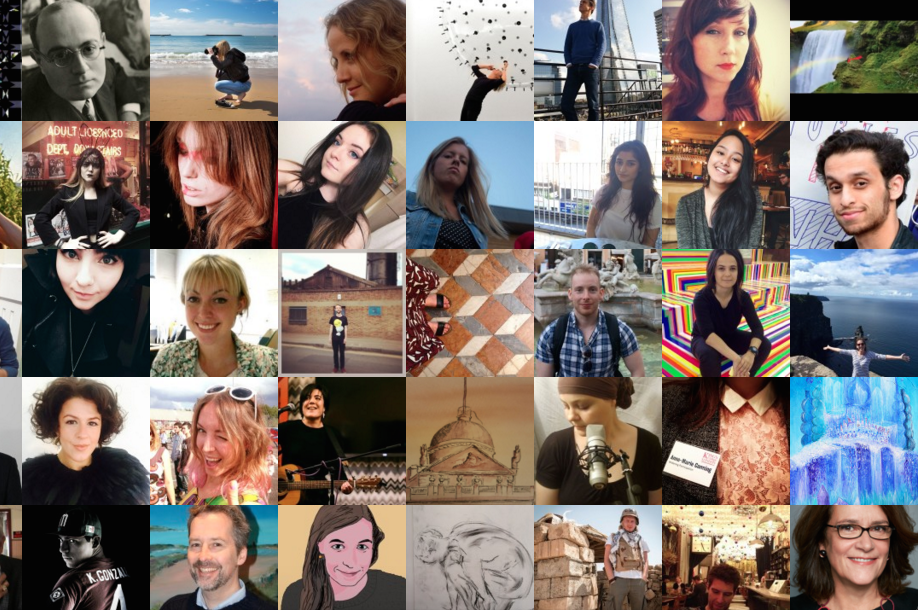
A small town of everyday artists
How do you embed an everyday culture of creativity in a university? This was the starting point for a creative experiment at King’s College London. Laura Speers and Jo Hunter share what they’ve learned so far.
King’s College London comprises 33,000 staff, academics and students spread across five campuses. The starting point of our research project called 33,000 Everyday Artists at King’s is believing that everybody already is an everyday artist (someone who uses their creativity in their day-to-day lives).
So often we lose sight of this in our busy working lives, or we have forgotten about the hobbies and passions we had when we were younger. The project seeks to retune our creative selves with our everyday life and asks what would university life look like if we brought our whole selves to study or to work everyday.
As well as taking the time to understand the organisational culture, we asked people about their passions and hobbies and saw them come to life
The initial proposal was for an experimental series of creative interventions to explore how creativity and creative potential can be recognised, integrated and embedded into every area of life at King’s in a systematic and sustainable way.
Alongside the project, we have developed a parallel research process designed to understand the process behind developing such a space for creativity. We’ve been looking at who gives permission for play or creativity. What are the barriers? What would need to change at the level of institutional procedures, norms and rules? What might this new institutional position look like?
Listening and talking
It felt like the best way to start answering these questions was by listening. Throughout the autumn term last year we were based at the campuses for one day a week acting as ‘everyday artists in residence’ and provocateurs.
This groundwork scoping phase involved 57 meetings – listening to and reflecting with all parts of the organisation, from the senior management and deans, to students, central services (such as the library), the student newspaper, academics and professional services staff. We also ran a few initial pilot interventions, such as lecture drop-ins, a student engagement event and communications experiments, to test people’s responses to our ideas and better understand how the internal culture worked.
As well as taking the time to understand the organisational culture, we asked people about their passions and hobbies and saw them come to life. In a huge institution like King’s it’s easy to see the weight of academic excellence and the values of a prestigious organisation, and to develop an impression of how that organisation is viewed externally. But this process helped us to understand and remember that an organisation is really made up of its individuals. Valuing and remembering this is vital to a healthy, creative culture.
Pilot project
Our scoping work inspired the development of the main phase of the pilot project, which started in January. It is structured around two main interventions: a crowd-sourced digital artwork and a 31-day creative challenge.
These interventions are designed to celebrate the existing creativity of the individuals at King’s, and then to cultivate that by inviting people to further explore their creative selves.
The digital artwork invites participants to contribute a picture of themselves and 100 words about what they love. It’s designed to showcase the real human beings that make up King’s, to remind us that behind academic achievement or status or the professional badges we wear, we are all people with unique loves and unique lives.
By joining the website, participants receive a creative prompt in their inbox every day in March – a fun activity or small task to carry out alone or with colleagues. It could be anything from writing a manifesto, to creating a sculpture out of old notebooks or exploring new places on campus. Participants are invited to do the task, think about how it affects them and share that with other people – exploring, documenting, designing, questioning, making up, composing, playing and reflecting as part of their daily life.
Initial observations
The project was designed to be and remains an experiment. We’re still half way through the pilot and have yet to discover its real impact, but here are a few observations so far:
- A little permission goes a long way: Just the act of inviting people to be themselves or talk about their passions has had a significant impact on lots of people.
- Communication is key: Nailing the core message and then tailoring it to specific segments of the audience has been a crucial part of the project. This has also involved discovering the most suitable communication and media platforms to reach particular groups.
- Balancing scale and being nimble is hard: Communicating to a range of different people in such a short timescale requires a range of tools. We’ve run workshops, been to lectures, staff meetings, research events, had creative ambassadors and learned to tailor the message to the audience. It’s been good to act small, keep trying different things and change tack quickly. But sometimes you also need to think and act larger to get further.
- Research is key: Being an innovative project allows us to document and learn from every action, response and conversation. Highs and lows are all great, as we’re always discovering something important for next time.
- Celebrating a culture means celebrating individuals: Seeing characteristics and traits as part of an organisational culture devalues the agency of the individuals that make it up. It takes a collection of individuals to change a culture, and valuing them for their unique role in that is vital.
Laura Speers is Researcher and Jo Hunter is Co-founder of 33,000 Everyday Artists at King’s College London.
33000everydayartists.co.uk
E: [email protected]
Tw: @existant
E: [email protected]
Tw: @thesonghunter
Join the Discussion
You must be logged in to post a comment.